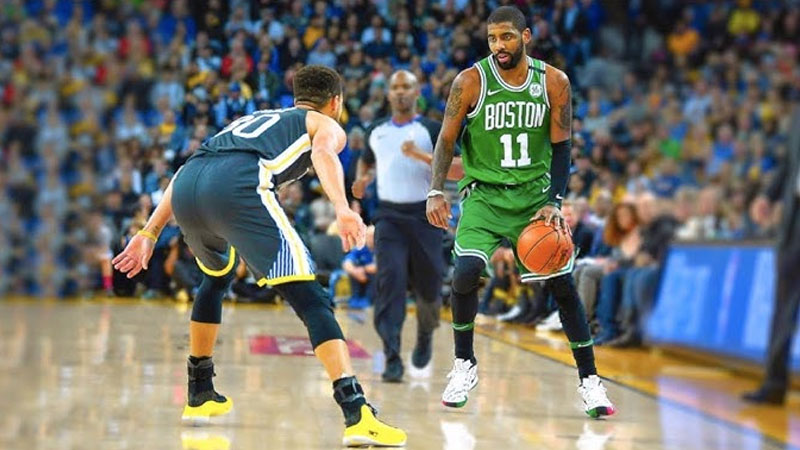Basketball is a dynamic and fast-paced sport that requires players to possess a wide range of skills. One of the most important skills for a basketball player, particularly guards, is having good “handles.” So, what are handles in basketball?
Let’s dive in and explore what are handlers in basketball. We will also discuss how to become a master handler and how to sharpen your skills on the court.
What Are Handles in Basketball?
Handles, also known as dribbling skills, refer to a player’s ability to control the ball effectively while moving, changing directions, and avoiding defenders.
This skill is essential for players who want to navigate the court with agility, create scoring opportunities, and maintain possession of the ball.
Handles are not limited to a specific set of moves or techniques but encompass a combination of dribbling skills, coordination, and court awareness.
A player with exceptional handles can dribble the ball close to their body, change hands effortlessly, and execute various moves to deceive defenders and create space for a shot or pass.
In essence, handles allow players to maintain control of the ball under pressure and execute moves that help them penetrate the defense or create scoring opportunities for themselves or their teammates.
There are several key elements involved in developing strong handles in basketball. Let’s explore them:
Dribbling Techniques
Effective dribbling involves using fingertips rather than the palm to control the ball. Players should focus on keeping their heads up, maintaining a low stance, and dribbling the ball with a combination of power and finesse.
Mastering different dribbling techniques such as crossovers, between-the-legs, behind-the-back, and spin moves can significantly enhance a player’s handles.
Ball Control
Handles rely on a player’s ability to control the ball in different situations. This includes being comfortable with both hands, as well as being able to dribble the ball at various speeds and heights.
Developing a strong grip, hand-eye coordination, and finger strength through practice and drills is crucial for improving ball control.
Court Awareness
Great handlers possess a deep understanding of the game and are aware of the positioning of their teammates, defenders, and open spaces on the court.
They can make quick decisions based on this awareness, whether it’s driving to the basket, creating passing lanes, or executing a pull-up jump shot. Court vision and basketball IQ are integral aspects of developing handles.
Quickness and Agility
Basketball is a sport that demands speed and agility. A player with good handles should be able to change directions and speeds rapidly, leaving defenders off-balance.
Agility drills, footwork exercises, and plyometric training can help players improve their quickness and reaction time, enabling them to make explosive moves while maintaining control of the ball.
Repetition and Practice
Like any basketball skill, developing handles requires consistent practice and repetition. Dribbling drills, stationary and on-the-move, are essential for building muscle memory and improving overall control.
Regularly challenging oneself with new moves and practicing against defenders in simulated game scenarios can help players refine their handles under pressure.
Handles in basketball are not limited to guards or ball handlers. Players in all positions can benefit from having good dribbling skills, as it enhances their overall versatility and enables them to contribute to their team’s success.
Even big men who typically play closer to the basket can benefit from developing handles, allowing them to drive to the hoop or make effective outlet passes.
What Are Ball Handling Skills?
Ball-handling skills refer to a player’s ability to control and manipulate the basketball effectively during the game. These skills involve dribbling, passing, and maintaining control of the ball in various game situations.
Here are some key ball-handling skills in basketball:
Dribbling
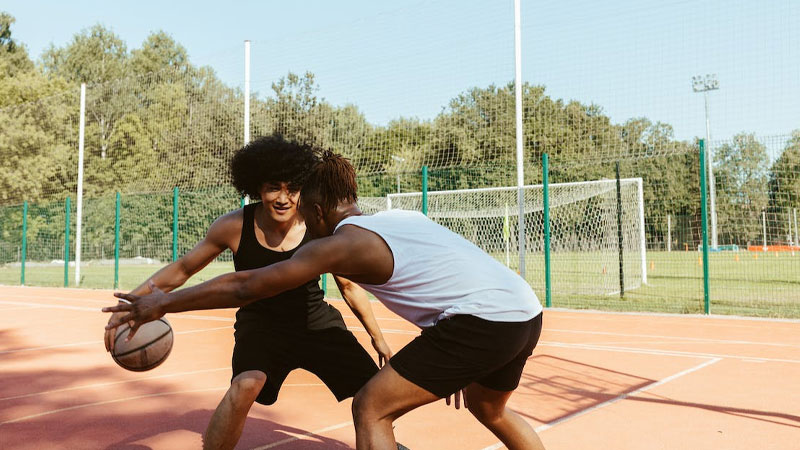
Dribbling is the act of bouncing the basketball off the floor with one hand while moving or stationary. It is a fundamental skill in basketball and forms the foundation of ball handling.
Dribbling techniques include using fingertips for better control, changing speeds, heights, and directions, and executing different dribbling moves such as crossovers, between-the-legs dribbles, behind-the-back dribbles, and spin moves.
Passing
Passing is an essential skill in basketball that involves accurately and efficiently transferring the ball to a teammate. Effective passing requires good hand-eye coordination, proper technique, and court vision.
Various passing techniques include chest passes, bounce passes, overhead passes, and one-handed or no-look passes.
Ball Control
Ball control encompasses the ability to maintain possession of the ball under pressure while navigating through defenders or executing moves. It involves having a strong grip on the ball, using proper hand positioning, and being able to shield the ball from opponents.
Ball control is crucial for protecting the ball, avoiding turnovers, and making accurate passes.
Hand-Eye Coordination
Hand-eye coordination is vital for ball-handling skills. It involves the ability to track the movement of the ball with the eyes and respond quickly and accurately with the hands. Good hand-eye coordination helps in receiving passes, making dribbling adjustments, and executing precise moves with the ball.
Court Awareness
Ball handling skills also include court awareness, which refers to a player’s ability to understand the positioning of teammates, opponents, and open spaces on the court. It involves reading the defense, recognizing passing opportunities, and making quick decisions based on the situation.
Court awareness enhances a player’s ability to make effective passes, create scoring opportunities, and maintain control of the ball.
Reaction Time
Quick reaction time is essential for ball handling. It enables players to respond to defensive pressure, adapt to changing situations, and make split-second decisions. Reacting quickly to defenders, traps, or double-teams allows players to avoid turnovers and maintain control of the ball.
Developing strong ball-handling skills requires practice, repetition, and a focus on improving each aspect of ball control.
Dribbling drills, passing exercises, and game-like simulations can all help players enhance their ball-handling abilities and become more effective on the basketball court.
Who Has the Best Handles in the NBA?
Several NBA players are renowned for their exceptional handles. Here are a few players who have been recognized for their impressive ball-handling skills:
Kyrie Irving
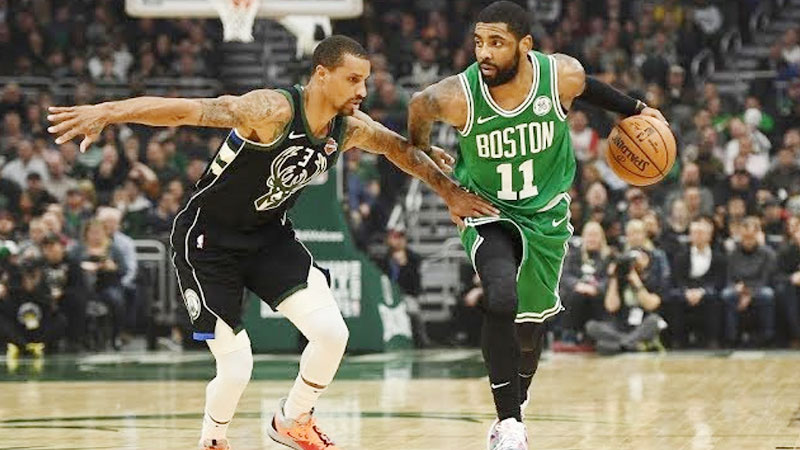
Kyrie Irving is widely regarded as one of the best ball handlers in the NBA. His exceptional dribbling ability, quickness, and creativity with the ball have earned him a reputation for having some of the most dazzling handles in the league.
Stephen Curry
While primarily known for his shooting prowess, Stephen Curry’s handles are equally impressive. His tight ball control, quick crossovers, and ability to create space with his dribble make him a formidable player off the dribble.
Chris Paul
Chris Paul’s handles are often praised for their precision and control. He combines exceptional dribbling skills with court vision, making him a masterful playmaker. Paul’s ability to navigate through defenders and set up his teammates is a testament to his ball-handling ability.
Jamal Crawford
Jamal Crawford is known for his mesmerizing handles and ability to break down defenders. His quick crossovers and hesitation moves have made him a crowd favorite when it comes to ball-handling displays.
James Harden
James Harden’s unique style of play is complemented by his exceptional ball-handling skills. His ability to change speeds, execute step-back moves, and manipulate defenders with his dribble has made him one of the most challenging players to guard.
These are just a few examples, and there are numerous other NBA players with impressive handles. The NBA is filled with talented ball handlers, each bringing their own unique style and skill set to the game.
How to Work on Your Handles for Basketball
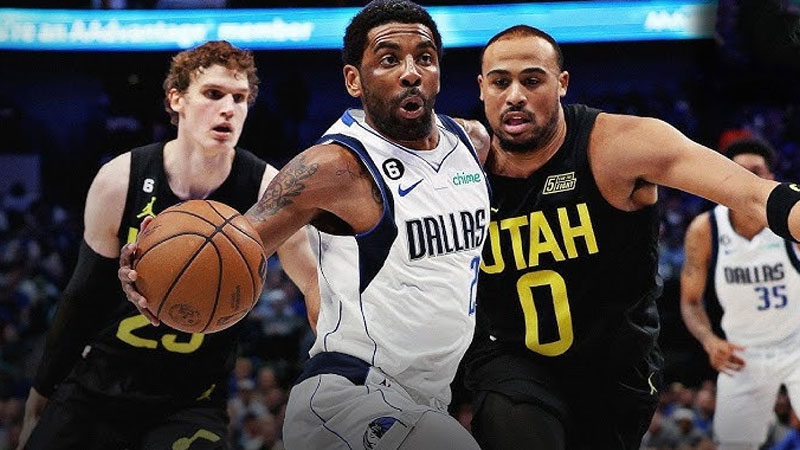
Working on your handles in basketball requires consistent practice and a structured approach. Here are some effective strategies to help you improve your ball handling skills:
Dribbling Drills
Incorporate a variety of dribbling drills into your training routine. Start with basic stationary dribbling exercises, such as dribbling the ball in place or around cones.
As you progress, incorporate on-the-move drills that simulate game situations, such as dribbling through cones or defenders. Focus on different dribbling techniques like crossovers, between-the-legs dribbles, behind-the-back dribbles, and spin moves.
Gradually increase the speed and intensity of your drills.
Two-Ball Dribbling
Use two basketballs simultaneously to improve your coordination and ambidexterity. Practice dribbling two balls at the same time, either while stationary or on the move. This drill enhances your ball control, hand-eye coordination, and overall handling ability.
Weak Hand Emphasis
Give special attention to developing your weaker hand. Work on dribbling drills and exercises with your non-dominant hand to improve its coordination and control. This will make you a more versatile player and enhance your overall handles.
Change of Speed and Direction
Practice changing speeds and directions while dribbling. Incorporate quick bursts of speed, sudden stops, and changes of direction to mimic game situations. This will help you become more effective at creating separation from defenders and executing moves to get to the basket.
Ball Control Exercises
Improve your hand strength and grip by incorporating ball control exercises into your training routine. Squeeze stress balls or use hand grip trainers to strengthen your fingers and improve your grip on the basketball. This will enhance your overall control and handling of the ball.
Game Simulation
Practice your handles in game-like situations. Set up scenarios with defenders or simulate game pressure by adding time constraints. This will help you develop the ability to handle the ball effectively under duress and make sound decisions while dribbling.
Watch and Learn
Study professional basketball players who excel in ball handling. Watch their moves, footwork, and decision-making on the court. Analyze their dribbling techniques and incorporate elements into your own game.
Pay attention to their body positioning, change of pace, and ability to create separation.
Consistent Repetition
Consistency is key to improving your handles. Set aside dedicated time for ball-handling drills and practice regularly. Repetition builds muscle memory and improves your overall control and confidence with the ball.
Challenge Yourself
Continually challenge yourself with new drills and moves to push your skills further. Set goals for improvement and track your progress over time. As you become more comfortable with certain moves, increase the difficulty by adding speed, complexity, or incorporating defenders.
Remember, developing strong handles takes time and effort. Stay focused, be patient, and maintain a growth mindset. With consistent practice and dedication, you can significantly enhance your ball-handling skills in basketball.
Are Handles Important in Basketball?
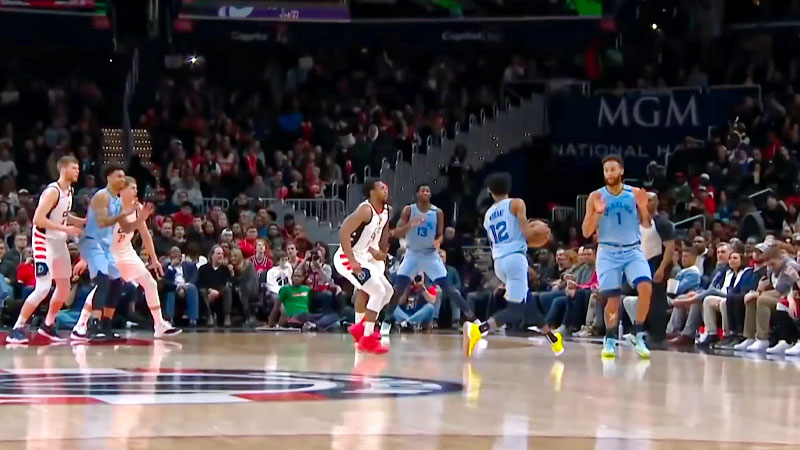
Yes, handles are extremely important in basketball. Handles, or strong dribbling skills, are essential for players to maintain control of the ball, create scoring opportunities, and evade defenders. Here are a few reasons why handles are crucial in basketball:
Ball Control
Handles allow players to maintain control of the ball while moving, changing directions, and evading defenders. Good ball control is essential for protecting the ball and preventing turnovers.
Players with strong handles can navigate through tight spaces, dribble through traffic, and execute moves to create open shots or passing lanes.
Creating Offense
Handles enable players to create their own offense by breaking down defenders and creating scoring opportunities. Skilled ball-handlers can use crossovers, hesitations, and other dribbling moves to create separation, drive to the basket, or pull up for a jump shot.
By having good handles, players become more effective at penetrating the defense, drawing fouls, and finishing at the rim.
Passing and Playmaking
Handles contribute to a player’s ability to make accurate and effective passes. By having control of the ball, players can execute precise passes, including bounce passes, wrap-around passes, and behind-the-back passes.
Good handles also improve a player’s court vision and playmaking abilities, allowing them to read the defense, create passing angles, and find open teammates for scoring opportunities.
Versatility
Handles are not limited to specific positions on the basketball court. While guards typically have more ball-handling responsibilities, players in all positions can benefit from developing strong handles.
Forwards and centers who can dribble effectively can create mismatches, drive to the hoop, and make plays from different areas of the court. Versatile ball-handlers can also contribute to fast breaks, initiate the offense, and adapt to different situations during a game.
Pressure and Game Situations
In high-pressure situations, such as tight defense or end-of-game scenarios, handles become even more important. Skilled ball-handlers can navigate through pressure, make smart decisions, and maintain composure, ensuring their team retains possession of the ball and executes effectively.
Handles also contribute to a player’s ability to break full-court presses or handle defensive traps.
In summary, handles play a vital role in basketball by enabling players to maintain control of the ball, create offense, make effective passes, and adapt to different game situations. Developing strong handles enhances a player’s overall skill set, versatility, and impact on the court.
FAQ
Can anyone develop good handles in basketball?
Yes, anyone can develop good handles in basketball with consistent practice and the right mindset. While some individuals may have a natural inclination towards dribbling, anyone can improve their skills through focused training.
It’s important to remember that basketball skills are developed over time, and progress may vary from person to person. With dedication, perseverance, and the willingness to put in the work, anyone can enhance their dribbling abilities and improve their handles.
Are handles only important for guards in basketball?
Handles are often associated with guards because they typically have more ball-handling responsibilities and are expected to navigate through defenders to create scoring opportunities.
However, handles are valuable for players in all positions. Even forwards and centers can benefit from having good dribbling skills, as it allows them to drive to the basket, make effective outlet passes, or contribute to fast breaks.
How long does it take to develop good handles in basketball?
The time it takes to develop good handles in basketball varies from person to person and depends on various factors, including the amount of practice, dedication, and natural aptitude.
Developing handles is a gradual process that requires consistent effort over an extended period.
Can I practice my handles alone, or do I need a partner?
While having a practice partner can be beneficial for some drills and game simulations, you can still work on improving your handles alone.
Many dribbling drills can be done individually, such as stationary dribbling exercises, dribbling through cones or obstacles, and working on different dribbling moves.
Bottom Line
That was all about what are handles in basketball. Handles are a critical aspect of basketball, allowing players to maintain control of the ball, create scoring opportunities, and outmaneuver defenders.
Developing handles requires a combination of technical skills, court awareness, agility, and practice. By continuously honing their dribbling skills, players can elevate their game and become more effective contributors to their teams on the basketball court.

